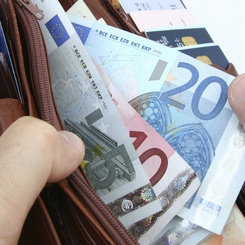With Peter O'Connor and Vincenzo Esposito Vinzi
Tourism can be very important to a country’s economy, particularly in less developed regions, where it can drive growth. Tourism also tends to have important impacts on the environment and society at large.
Many researchers have examined the consequences of tourism, but fewer have looked at the other side of the coin: the way economic, social and environmental factors can drive tourism – or hold it back. The few studies that have examined the issue have usually used the various factors to arrive at a ‘score’ reflecting a particular country’s attractiveness as a tourist destination.
We wanted to look at this topic more deeply – not just how economic, social and environmental factors affect tourism, but also how they affect each other, both positively and negatively. To do this, we used a mathematical technique called structural equation modelling, which uses a set of linear equations to analyse the relationships between a set of variables.
Choosing the variables
Building on the work of earlier researchers, we first developed a set of variables covering four aspects of a tourist destination: its economy, its infrastructure, its natural environment and its society.
To measure the economy, we used five variables: consumer price index, purchasing power parity, trade volume, foreign direct investment and industry value added. These reflect the way lower local prices or better exchange rates entice tourists to visit, and how a country’s tourism tends to benefit when its businesses are doing well.
To assess environmental issues affecting tourism, we used three measures: population density, carbon dioxide emissions and the number of environmental treaties ratified. The environment is important because people obviously prefer to visit places with unspoilt natural surroundings.
To analyse infrastructure, we used seven variables reflecting a country’s road network, sanitation standards, electricity supply, number of vehicles, Internet access, landline phone network and mobile phone network coverage. All these factors improve the tourism experience by providing easier travel, drinking water and better communication.
Finally, society in a tourist destination was reflected in variables covering education, life expectancy, ownership of TVs and PCs and newspaper readership. Social issues are relevant because local populations can react to tourism in different ways – embracing it or rejecting it.
Causal relationships
Having determined our variables, we tried to predict the most likely causal relationships between these four areas and tourism.
For example we thought that a strong economy could have both positive and negative effects: higher local prices could discourage visitors, but growth would develop infrastructure and improves society, both of which could help tourism indirectly. As infrastructure develops, tourism should increase – but the environment might suffer.
Similalrly social differences between tourists and their ‘hosts’ could either help or hinder tourism, depending on the local quality of life and people’s attitudes towards making sacrifices for the tourist dollar. Social progress could also affect the environment – the more ‘advanced’ the society, the more enlightened its attitudes towards sustainability. And the more pleasant the environment, the more the tourist industry is likely to benefit.
Improving the model
We tested our hypotheses using data for 162 countries. First, we tested and refined the data, and quickly discovered that there was too much overlap between our society and infrastructure concepts , so we combined them both under infrastructure. We found that electricity coverage was actually more relevant to the environment than to infrastructure, so we reassigned it. And three variables (population density, foreign direct investment and industry value added) were not significant, so we dropped them.
We ended up with a new, simpler model reflecting economy, infrastructure, environment and tourism that worked much better. When we analysed our data using this model, we found that some of our hypotheses were supported – but some were not.
Surprising results
According to our results, a better economy has no direct influence on tourism. This challenges the idea that lower local prices or favourable exchange rates encourage people to visit a destination.
However, the economy does have a direct, positive effect on both infrastructure and society – and these two factors, in turn, affect tourism. This is in line with the findings of earlier researchers, who found that better infrastructure encourages tourism. In fact, our model shows that infrastructure is the single most important factor – more than either the environment or the economy.
This finding challenges an earlier theory called ‘social exchange’, which argued that a more deprived society would be more willing to suffer some inconvenience in order to gain tourists’ business. In our model, the more developed the society, the more supportive it is of tourism.
We found that a well-developed infrastructure does indeed cause harm to the environment, as we expected. But a more developed society does not necessarily result in environmental improvements, and a better environment does not seem to drive more tourism either.
Real-world applications
Previous studies have looked at the way these areas affect tourism, without considering how they interact. Our study has taken a first step towards uncovering the causal relationships between the key factors affecting the tourism sector, and showing how they actually affect tourism. By using real-world data and subjecting it to rigorous analysis and refinement, we have shown how tourism can be investigated in a more scientific, empirical way.
Our study has many potential applications. Policymakers who are aiming to promote tourism in their respective countries can use it to make more informed decisions about allocating resources to different areas of development. For example, while higher local prices might be seen as negative, it’s important to realise that a stronger economy drives infrastructural and social improvements that indirectly encourage tourism.
Similarly external trade is important, because it helps drive economic growth and infrastructure improvements. Electronic communications are key – they must keep pace with developing road networks in order to attract tourists. Finally, the levels of computer use, car ownership and newspaper readership are important, because they help society to develop, in the process becoming more welcoming and attractive to visitors from overseas.
Further Reading:
"Structural Equation Modeling in Tourism Demand Forecasting: A Critical Review", published in Journal of Travel and Tourism Research.









